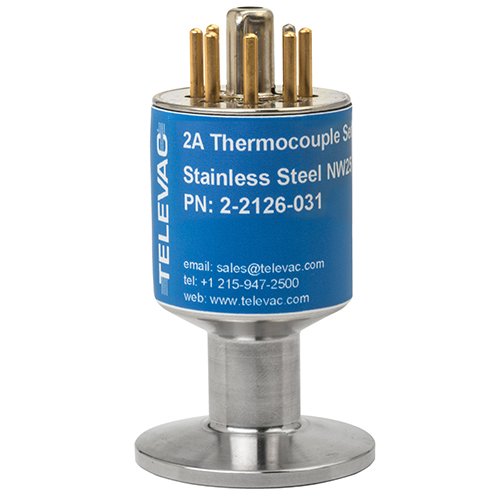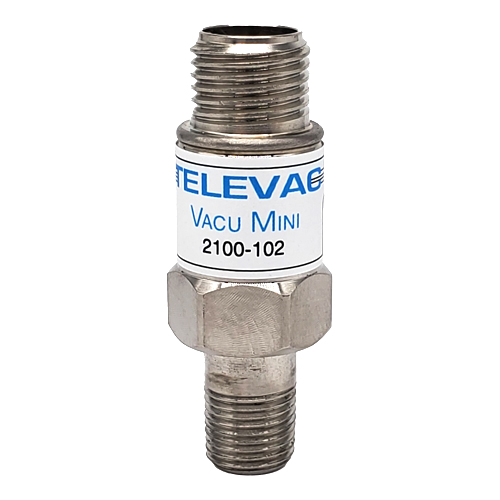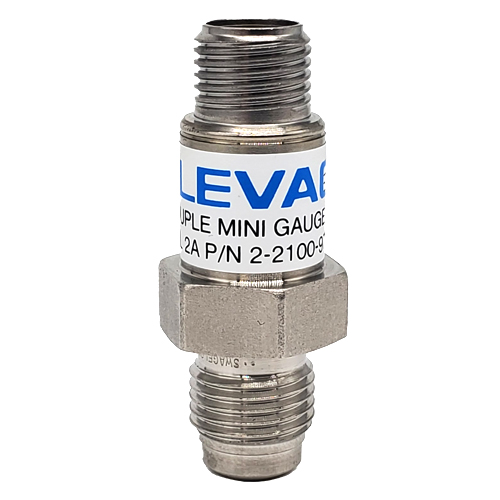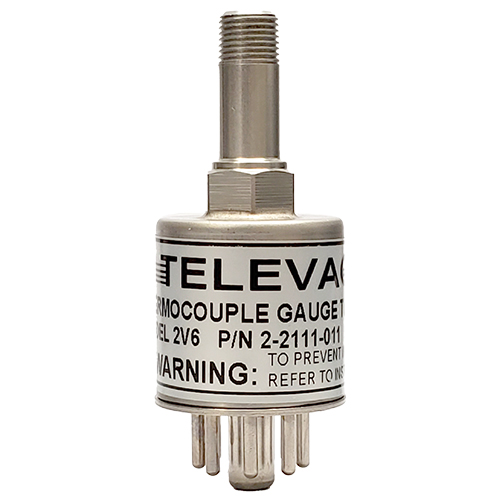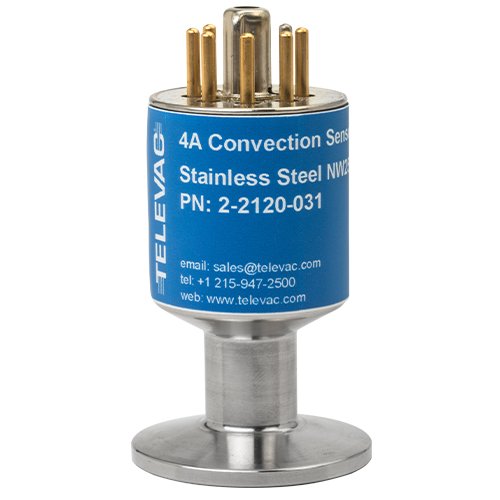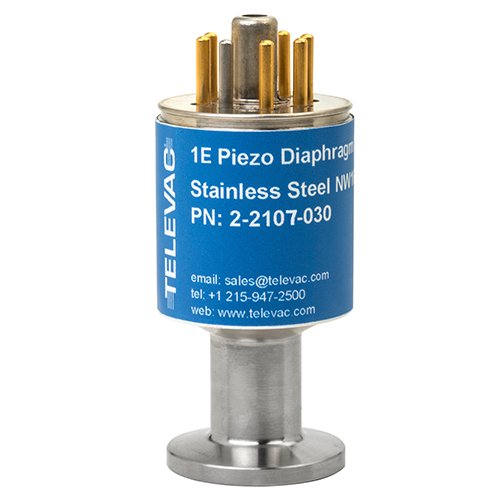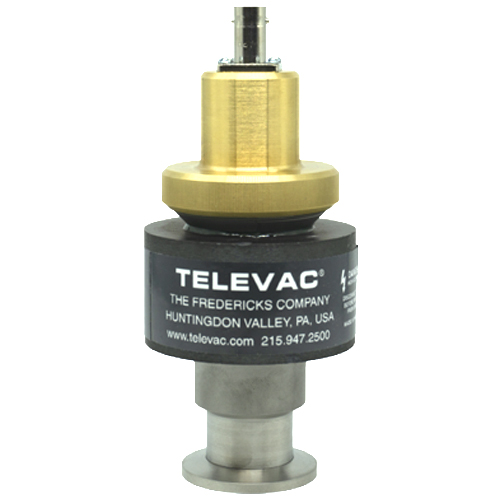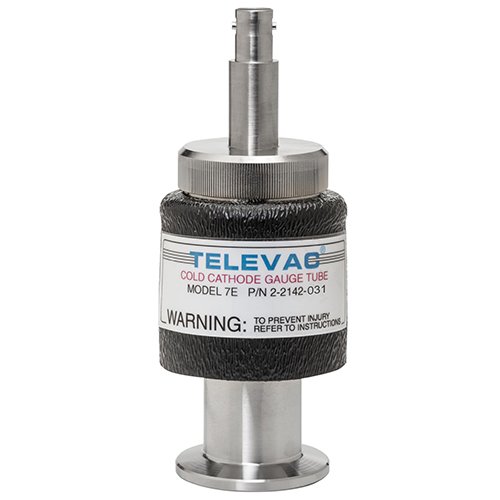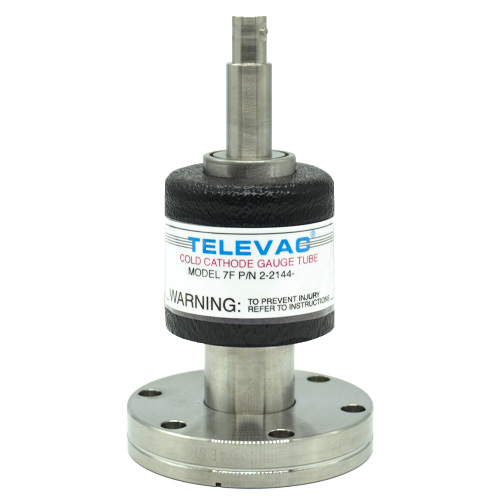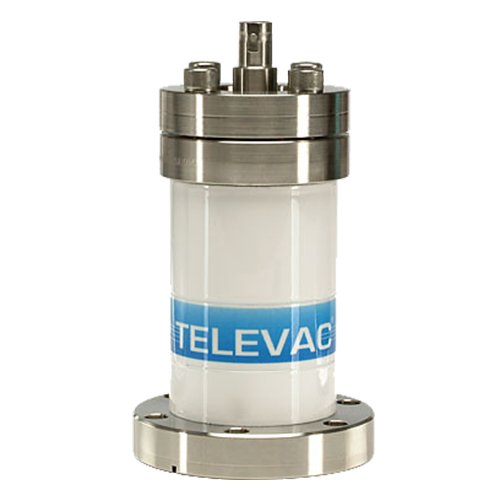Televac Passive Vacuum Gauges and Vacuum Transducers
Passive vacuum gauges (also called vacuum transducers or vacuum pressure gauges) are used for vacuum measurement (typically considered below atmospheric pressure) or for pressure measurement (typically considered above atmospheric pressure). Note that the terms vacuum and pressure are often used interchangeably.
All Televac® passive gauges require a controller or an active gauge in order to provide measurements for an end user. Controllers connect to our passive gauges with cables, whereas an active gauge electronics head plugs directly into a passive gauge.
If you’re interested in a rack or panel mounted controller, a good place to start is the MX200, or if you’re interested in a portable controller, check out the VacuGuard™. If you want an active gauge, check out our MX4A (Pirani gauge) and MX7B (Penning ionization gauge). Televac offers the most innovative and simple to integrate vacuum/pressure measurement solutions!
Televac Passive Vacuum Gauges and Vacuum Transducers
The Fredericks Company’s Televac® brand designs and manufactures these gauges (also called a vacuum sensor or a vacuum transducer) including thermocouple gauges, convection gauges (also called Pirani gauges), and diaphragm gauges for low vacuum measurement along with cold cathode gauges (also called Penning ionization gauges) and hot ion gauges for high vacuum measurement.
We’ve designed all of our vacuum transducers to be cost-effective, robust, contamination resistant, and optimized for a variety of applications and environments. Some of the most common markets where our units are used are heat treat and vacuum furnaces, national labs and research and development, and cryogenics and industrial gases.
Not sure which vacuum transducer to select? Here’s some additional information on our most popular vacuum transducers.
2A Thermocouple (Pirani)
Our 2A thermocouple gauge (also often called a Pirani vacuum transducer) is widely considered to be our most robust and contamination resistant low vacuum transducer due to the Pirani filament design and operating temperature, and it’s simple to install because it can be mounted in any orientation.
The 2A thermocouple gauge’s primary limitation is that with all of our controllers, this thermocouple gauge will only measure from 1*10-3 Torr (1 micron) to 20 Torr (20,000 microns), instead of all the way up to atmosphere (760 Torr). It also has slightly reduced accuracy over some parts of its operating range when compared to the 4A convection Pirani gauge.
4A Convection (Pirani)
The 4A convection gauge (also often called a Pirani vacuum transducer) is essentially an improved performance version of the 2A thermocouple vacuum transducer. It’s another very robust and contamination resistant low vacuum option due to the Pirani design, but the 4A convection gauge must be installed in a vertical orientation in order to measure up to atmosphere (760 Torr).
Its primary benefits over the 2A thermocouple Pirani gauge are that the 4A convection gauge has better accuracy (±10%) over its measurement range, and that it can read from 1*10-3 Torr (1 micron) up to atmosphere (760 Torr).
7B Penning Ionization (Cold Cathode)
The 7B cold cathode gauge is a Penning ionization gauge which is known in the heat treat and vacuum furnace industry as the most robust and contamination resistant high vacuum option available on the market for vacuum/pressure measurement due to its mechanical design and operating voltage. This Penning ionization gauge has a measurement range from 10-7 Torr to 10-3 Torr and can be disassembled and cleaned many times by an end user to extend its life.
The 7B cold cathode gauge is typically paired with a 2A thermocouple gauge or a 4A convection gauge, which automatically turns on the 7B when it reaches 1*10-2 Torr. When paired with a 4A convection gauge you have a full range vacuum measurement solution from high vacuum (10-7 Torr) to atmosphere (760 Torr).
7FCS Cold Cathode
The 7FCS cold cathode gauge is a double inverted magnetron gauge (as opposed to Penning ionization gauge technology) designed for UHV (ultra high vacuum; 10-11 Torr) measurements which is known by national labs for its quick start capability.
Unlike other cold cathode gauges, it includes a filament that is turned on every time the gauge turns on, allowing it to start and provide accurate readings at 10-8 Torr (or lower) within 5 seconds. This is particularly useful for national labs where power cycling can often occur while the system remains in high vacuum or UHV.
The 7FCS gauge is typically paired with a 2A thermocouple Pirani or a 4A convection Pirani, which automatically turns on the 7FCS when it reaches 1*10-2 Torr. When paired with a 4A you have a full range vacuum/pressure measurement solution from high vacuum (10-11 Torr) to atmosphere (760 Torr).






